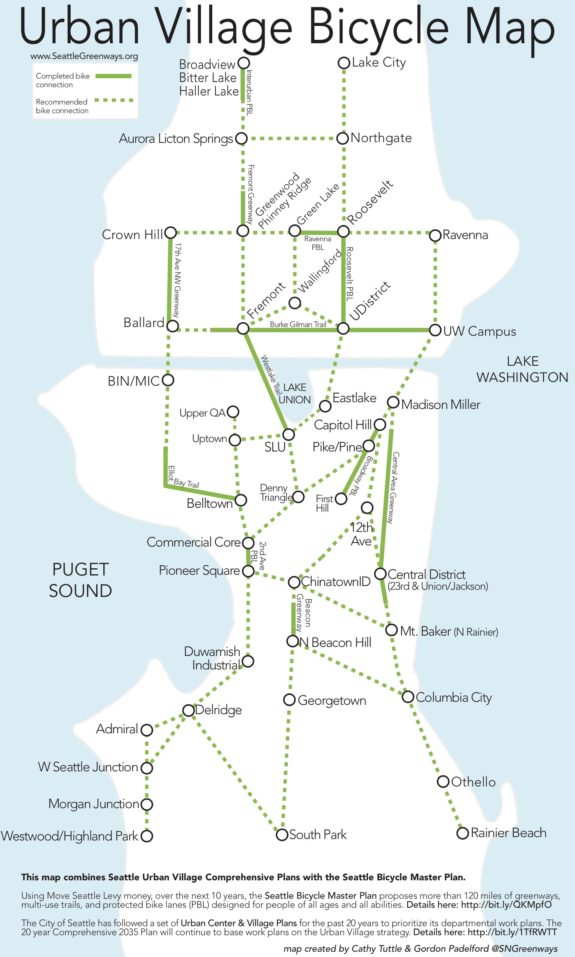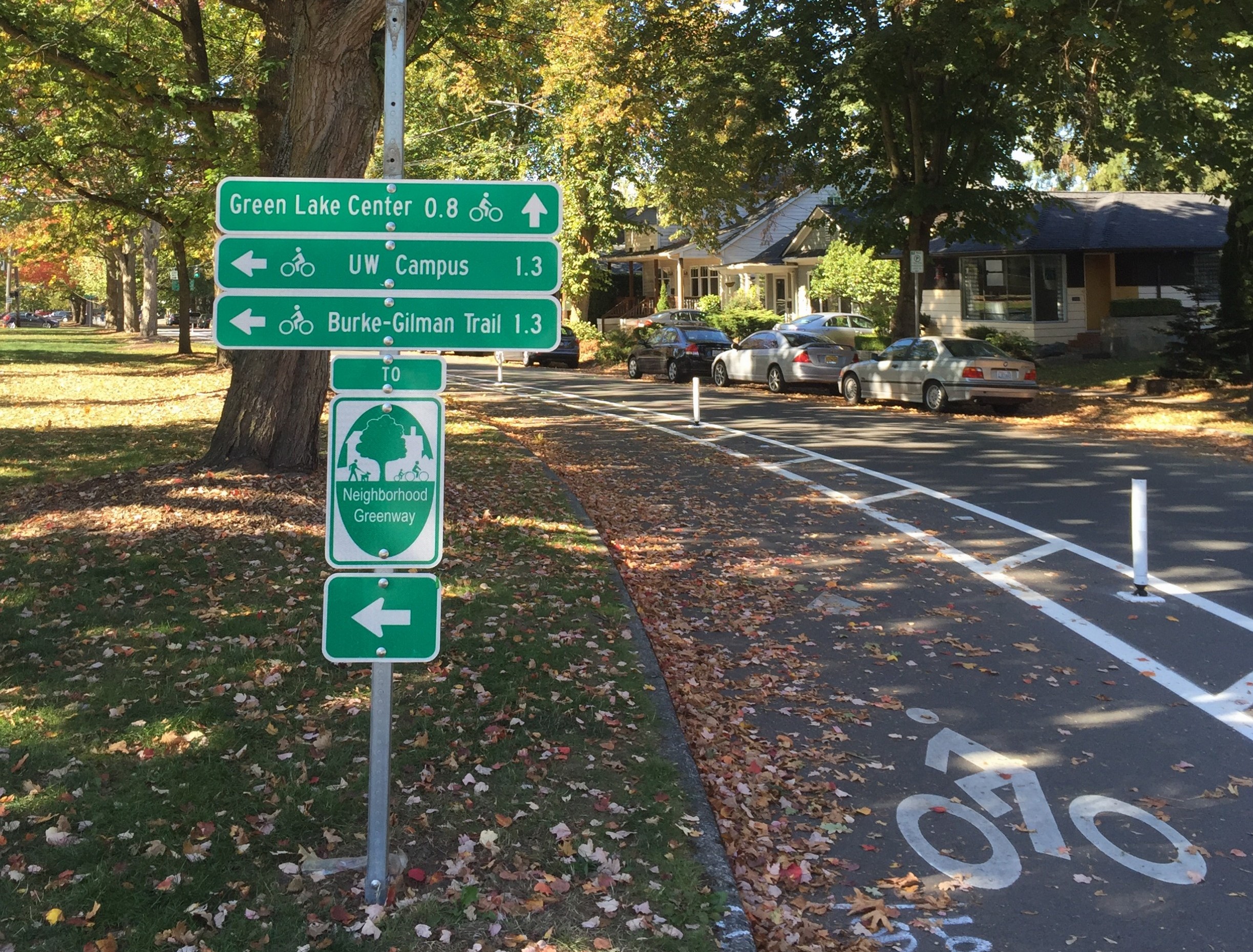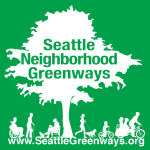In Part 1 of our story, we left Tim wondering how to commute by bike with his baby daughter and left Shirley stranded with her children trying to cross Seattle’s most dangerous street, Rainier Ave S. In Part 2, we explain how to rescue them.
The City Has A Good Plan
Seattle’s Bicycle Master Plan is a 20-year plan (2014-2034). The plan “Proposes a network of bicycle facilities throughout the city that provides a way for people of all ages and abilities to travel by bicycle within their neighborhoods, from one neighborhood to the next, and across the city.” The plan’s performance targets include quadrupling the ridership by 2030, getting to zero traffic fatalities by 2030, and having “100% of households in Seattle within 1⁄4 mile of an all ages and abilities bicycle facility by 2035.”
Unfortunately, when it has come to implementing the bike plan, the public feels the city is falling short. Much has been written about the implementation plan already (Stranger, Seattle Bike Blog, CHSBlog, etc), but to recap why people are disappointed:
- The bike implementation plan pretends downtown doesn’t exist. The city makes no commitments to connect our major job center and our densest neighborhoods.
- Less is being built after passing the Move Seattle Levy than was originally projected before the levy was passed. This may be due to simple over-promising, but now people like Shirley and Tim are understandably disappointed.
- It seems that the routes which have been selected to be developed first in neighborhoods are low hanging fruit rather than the routes people need most to be able to safely get around.
So what would a robust implementation of a bike network look like?
Our city is growing fast. Our urban villages, the places our city has designated to grow the fastest, desperately need better transportation connections. We must build a network of trails, protected bike lanes, and neighborhood greenways that link our fastest growing neighborhoods together. We must provide safe, time competitive, and comfortable routes that entice people of all ages and abilities to try biking for some of their daily transportation needs.
Here’s a purposefully-not-to-scale concept map of a connected bike network that links all of Seattle’s Urban Villages (PDF):

We can build this. This represents about 60 miles of high quality safe routes for biking, the same number of miles the Move Seattle Levy promises over the next five years.
We can’t wait any longer to build a network downtown. We can’t wait any longer to build the important routes that people need most to get between neighborhoods. Join us and the Cascade Bicycle Club in calling on the city to improve the bicycle implementation plan!
You can make a difference! Here’s how:
Take Your Bike To Lunch Day At City Hall
What: RSVP and bring sack lunch & your bike to City Hall on Tuesday at 12 p.m. Let Seattle City Council know we can’t wait any longer for safe streets. Help fill the main 5th Avenue entry bike parking at City Hall with your bikes and write postcards to Seattle City Council telling your stories.
When: Tuesday, May 17 at 12 p.m.
Where: Seattle City Hall main atrium [Get Directions]
RSVP: https://secure.lglforms.com/form_engine/s/kvmPFGzZ_xCu5IlIcxpwjg
Testify At Seattle City Council
What: RSVP to testify on Tuesday at 2 p.m. at the Seattle City Council Transportation Committee to let them know we can’t wait for safe streets. Cascade will help you sign up to exercise your democratic rights to speak to our elected leaders.
When: Tuesday, May 17 at 2 p.m. Arrive at 1:45 p.m. to get on the speaking list, meeting begins at 2 p.m.
Where: Seattle City Hall – Council Chamber [Get Directions]
Really fired up? RSVP for both!
Let’s go. Take Your Bike To Lunch Day At City Hall on Facebook.



